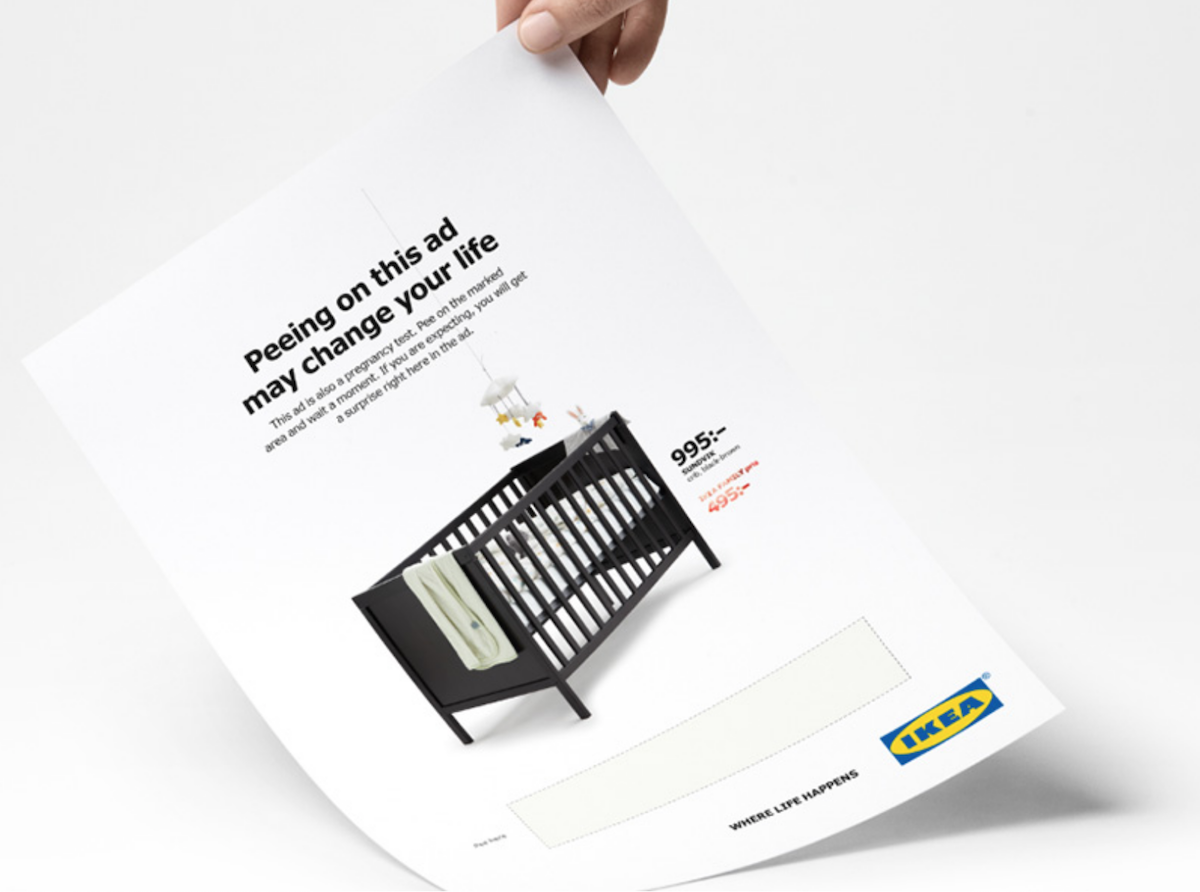
In a previous article, I talked about the Fogg Behavioral Model and how it helps to understand, predict, and motivate customer behavior as it relates to product marketing. Not that IKEA is channeling the Fogg Behavioral Model specifically, but a recent article on AdWeek couldn’t be a more perfect example of this dynamic operating in print.
Dr. B. J. Fogg is a social scientist who studies what causes people to pull the trigger on a purchase. What makes them decide to make that purchase right now? His model brings together three components: motivation (the desire to act), the ability to act, and the trigger to “act now.”
Fogg argues that motivation is the most difficult of the factors to influence, so marketers can often get more out of their marketing dollars by focusing on the other two—those that are easier to influence—instead. (See my previous post on this topic.) But in this example, IKEA does an outstanding job of using print to do something that is very hard to do — uncover a motivation to buy that might not have previously existed. Then it gives readers an incentive to buy from one of their stores right now.
The purpose of the ad, which runs in Sweden, is to get people to pee on it. But hold on—it’s not as weird as it sounds. The ad is actually a pregnancy test. The headline of the ad reads, “Peeing on this ad could change your life.” If the reader is pregnant, the chemical reaction (the same as used in traditional pregnancy tests) reveals a previously invisible offer for a discounted price on a crib.
Looking at this from the perspective of the Fogg Behavioral Model, IKEA is using print to create or uncover a new motivation to buy. The moment the reader tests positive for pregnancy is critical for retailers selling cribs. It is in this moment that the expectant mother learns for certain that she will need one, and she will only need one (most likely!), so placing the product and a discount in front of her at the moment of discovery is brilliant.
This is a great example of ingenuity in print and how understanding what motivates customer behavior can be used to great effect. Not that I’m suggesting that U.S.-based marketers should be running out to create pregnancy or any other type of test. But the core concept — using print in a creative, unexpected way to uncover, create, or motivate behavior — is one that all marketers can apply to their product mixes and target audiences.
Do you know of any other examples of print being used to create motivation in a creative way? Please share!














Discussion
By Ryan Harper on Jan 29, 2018
Heidi please PLEASE publish the return on this ad in the future if you can find it!!! I would love to hear how many coupons/codes were redeemed. This is excellent use of print!